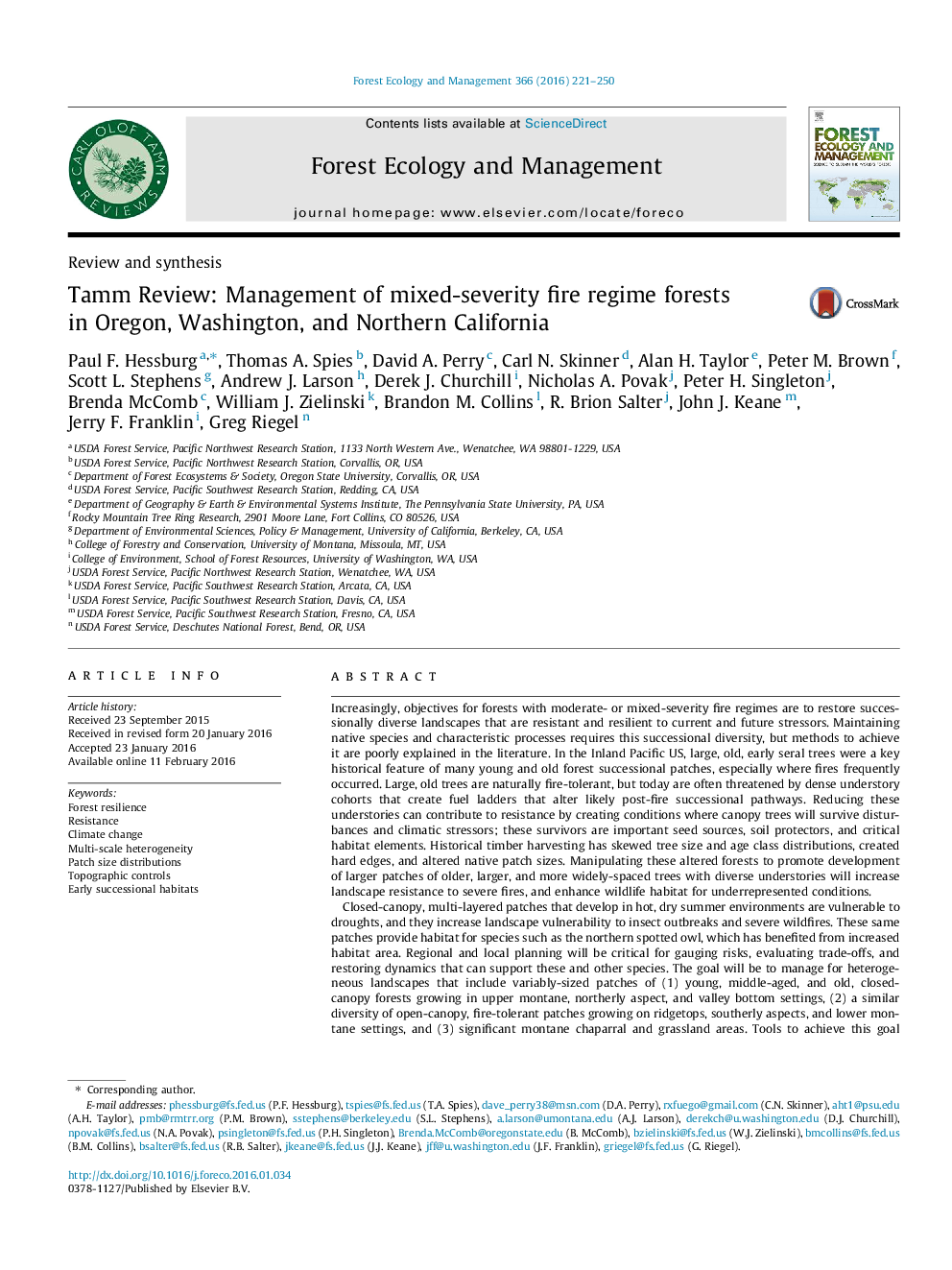| Article ID | Journal | Published Year | Pages | File Type |
|---|---|---|---|---|
| 86031 | Forest Ecology and Management | 2016 | 30 Pages |
•Mixed severity fire regime forests have been strongly impacted by a century of management.•Current climate change and wildfire impacts are entwined with past management.•We review decades of applied research that is relevant to restoring these forests.•We recommend nine strategies that emerge from that research.•We discuss their usefulness as a framework for conservation and restorative management.
Increasingly, objectives for forests with moderate- or mixed-severity fire regimes are to restore successionally diverse landscapes that are resistant and resilient to current and future stressors. Maintaining native species and characteristic processes requires this successional diversity, but methods to achieve it are poorly explained in the literature. In the Inland Pacific US, large, old, early seral trees were a key historical feature of many young and old forest successional patches, especially where fires frequently occurred. Large, old trees are naturally fire-tolerant, but today are often threatened by dense understory cohorts that create fuel ladders that alter likely post-fire successional pathways. Reducing these understories can contribute to resistance by creating conditions where canopy trees will survive disturbances and climatic stressors; these survivors are important seed sources, soil protectors, and critical habitat elements. Historical timber harvesting has skewed tree size and age class distributions, created hard edges, and altered native patch sizes. Manipulating these altered forests to promote development of larger patches of older, larger, and more widely-spaced trees with diverse understories will increase landscape resistance to severe fires, and enhance wildlife habitat for underrepresented conditions.Closed-canopy, multi-layered patches that develop in hot, dry summer environments are vulnerable to droughts, and they increase landscape vulnerability to insect outbreaks and severe wildfires. These same patches provide habitat for species such as the northern spotted owl, which has benefited from increased habitat area. Regional and local planning will be critical for gauging risks, evaluating trade-offs, and restoring dynamics that can support these and other species. The goal will be to manage for heterogeneous landscapes that include variably-sized patches of (1) young, middle-aged, and old, closed-canopy forests growing in upper montane, northerly aspect, and valley bottom settings, (2) a similar diversity of open-canopy, fire-tolerant patches growing on ridgetops, southerly aspects, and lower montane settings, and (3) significant montane chaparral and grassland areas. Tools to achieve this goal include managed wildfire, prescribed burning, and variable density thinning at small to large scales. Specifics on “how much and where?” will vary according to physiographic, topographic and historical templates, and regulatory requirements, and be determined by means of a socio-ecological process.
